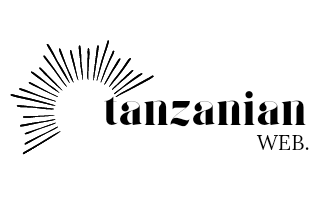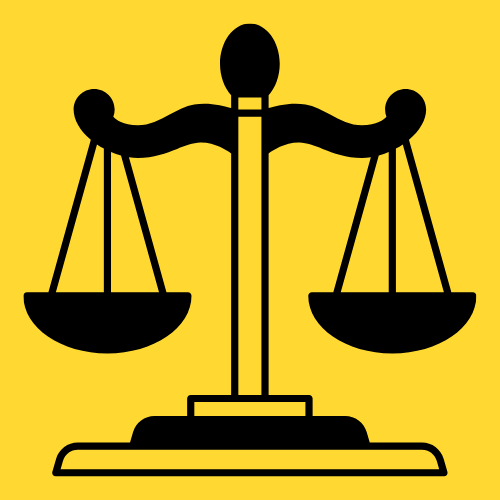“200”, Aptitude Test
Questions and Answers for Tug Master II – Tanzania Ports Authority (TPA).
ABSTRACT
This collection of 200 multiple-choice
questions is tailored for candidates preparing for the Tug Master II
aptitude test in Tanzania. They cover essential knowledge and skills required
for tug operations. It includes topics such as navigation, safety equipment
inspection, firefighting, emergency procedures, communication, staff training,
report writing, and maritime regulations. The questions test both technical
understanding and practical decision-making abilities, preparing candidates to
effectively assist in ship berthing/unberthing, maintain safety standards, and
manage operational duties in accordance with maritime laws. The closely related
answer choices promote critical thinking and accuracy, mirroring the challenges
faced by tug masters in real-world scenarios.
Prepared by:
A lawyer stationed in Dar-es-salaam.
0628729934.
Date: June 1, 2025
Dear applicants,
This collection of questions and answers
has been carefully prepared to help all of you to understand the key areas
tested during the interview. The goal is to provide a useful, and practical
study guide so you can all perform confidently and fairly in the selection
process. I wish you the best of luck, and may this resource support you in
achieving success!
Warm regards,
Johnson Yesaya Mgelwa
For Personal Use by Applicants Preparing
for Tug Master II interview at Tanzania Ports Authority (TPA).
ALL
QUESTIONS ARE COMPILED TOGETHER.
1. What is the primary
purpose of a tugboat during berthing operations?
A. To secure the anchor B. To assist in navigation C. To push or pull the ship
into position D. To transport cargo
Answer:
C
2. The Certificate of Competence (CoC) for
Officer in Charge of a Navigational Watch is governed under which regulation?
A. Reg. III/1 B. Reg. II/1 C. Reg. IV/2 D. Reg. I/2
Answer:
B
3. Which of the following best describes
the Gross Registered Tonnage (GRT)?
A. Weight of cargo B. Net income from voyage C. Internal volume of the ship D.
Engine power in kilowatts
Answer:
C
4. During un-berthing, what is the most
critical factor a tug master must assess?
A. Passenger capacity B. Wind and current conditions C. Paint color of the
vessel D. Daily fuel consumption
Answer:
B
5. Which is a deck machinery equipment?
A. Radar B. Winch C. GPS D. AIS
Answer:
B
6. Fire extinguishers onboard a tug should
be inspected
A. Once in 5 years B. Weekly only C. Monthly and after every use D. Annually
only
Answer:
C
7. What does the term “berthing” mean in
marine transport?
A. Discharging cargo B. Anchoring at sea C. Bringing a ship to a dock D.
Loading fuel
Answer:
C
8. One knot is equivalent to how many
nautical miles per hour?
A. 1.1 B. 1.5 C. 0.9 D. 1
Answer:
D
9. In marine terminology, the “bow” refers
to
A. Rear part of the ship B. Underwater hull C. Front part of the ship D. Upper
deck
Answer:
C
10. Which equipment is NOT a firefighting gear?
A. Fire axe B. Foam applicator C. Lifebuoy D. CO2 extinguisher
Answer:
C
11. A tugboat assisting a vessel during
strong currents should
A. Pull from stern only B. Wait for current to stop C. Coordinate with pilot
and master D. Push blindly from port
Answer:
C
12. Who is responsible for keeping a
navigational watch?
A. Deck cadet B. Tug master C. Officer in charge D. Bosun
Answer:
C
13. During an onboard emergency, what is
the tug master's first action?
A. File a report B. Ensure safety of vessel and crew C. Turn off all equipment D.
Call port manager
Answer:
B
14. AIS stands for
A. Automatic Identification System B. Automated Internal Scanner C. Advanced
Inspection Service D. All Integrated Systems
Answer:
A
15. The stern of the vessel is located at
A. Front B. Rear C. Side D. Top
Answer:
B
16. A good marine report should include
A. Personal opinions only B. Detailed events, timings, and actions C.
Decorative images D. Classified content
Answer:
B
17. Onboard drills are important because
A. They entertain crew B. Required only during inspection C. Prepare the crew
for emergencies D. Reduce fuel costs
Answer:
C
18. Weekly inspection of deck gear helps to
A. Increase vessel speed B. Identify malfunctions early C. Save food supplies D.
Avoid admin duties
Answer:
B
19. The port side of the vessel is always
on the
A. Right when facing forward B. Left when facing forward C. Rear D. Upper deck
Answer:
B
20. When is a tugboat's maximum pulling
power most needed?
A. During cargo offloading B. During crew transfers C. During emergencies or
maneuvering D. During maintenance
Answer:
C
21. The term “fire triangle” includes
A. Fuel, oxygen, heat B. Water, heat, smoke C. Smoke, carbon, fuel D. Wind,
heat, oil
Answer:
A
22. A marine logbook is used for
A. Planning routes B. Recording official events and watch C. Scheduling
training D. Sending messages
Answer:
B
23. The function of a radar in navigation
is to
A. Detect fire B. Display music C. Detect objects around vessel D. Operate
lifeboats
Answer:
C
24. During staff appraisal, the Tug Master
should
A. Ignore performance records B. Use personal bias C. Use objective criteria D.
Rely on rumors
Answer:
C
25. Which gear is essential during oil
spill firefighting?
A. Foam monitor B. Binoculars C. Paper towel D. Compass
Answer:
A
26. The 'draft' of a vessel means
A. Ship’s height B. Water depth displaced C. Fuel level D. Cargo weight
Answer:
B
27. Training reports are necessary for
A. Decoration B. Port clearance C. Evaluating crew learning D. Visitor permits
Answer:
C
28. Before starting a watch, the OIC should
A. Clean the deck B. Sleep C. Familiarize with vessel and surroundings D. Cook
meals
Answer:
C
29. A tug’s winch is typically used for
A. Broadcasting music B. Controlling anchor C. Towing and mooring D. Fuel
transfer
Answer:
C
30. The abbreviation GMDSS means
A. General Marine Data Safety System B. Global Maritime Distress and Safety
System C. Government Maritime Department Safety Survey D. General Maritime
Department Security Service
Answer:
B
31. Which report is most suitable to
submit monthly to a supervisor?
A. Fire record only B. Logbook C. Monthly operational report D. Store receipt
Answer:
C
32. The best tool to measure ship speed is
A. Compass B. Knot meter C. Anemometer D. Altimeter
Answer:
B
33. The nautical mile is approximately
A. 1000 meters B. 1.5 kilometers C. 1.852 kilometers D. 1 kilometer
Answer:
C
34. A “pilot” in a port is responsible for
A. Flying the ship B. Maintaining the tug C. Navigating ships in port D.
Issuing reports
Answer:
C
35. CO2 extinguishers are best for
A. Wood fires B. Electrical fires C. Fuel tank cleaning D. Sea water
contamination
Answer:
B
36. OINW CoC is suitable for vessels of
A. Less than 100 GRT B. Over 500 GRT C. Passenger only D. Sailboats only
Answer:
B
37. Best practice when inspecting
firefighting gear is to
A. Do it in groups B. Tick any box C. Follow checklist and verify D. Rely on
last inspection
Answer:
C
38. Tug master appraises staff to
A. Scare them B. Determine promotions/training C. Delay salary D. Reduce staff
Answer:
B
39. A marine anchor is typically located
A. On stern only B. On bridge C. On the bow D. In engine room
Answer:
C
40. Training needs can be identified
through
A. Gossip B. Staff discipline C. Performance gaps D. Fuel reports
Answer:
C
41. Who is responsible for preparing
monthly operational reports?
A. Cook B. Tug Master or Officer C. Seaman D. Port cleaner
Answer:
B
42. The correct sequence of fire response
is
A. Report, Fight, Escape B. Escape, Forget, Fight C. Panic, Call, Jump D.
Fight, Report, Evacuate
Answer:
A
43. During berthing, tugboats often
position
A. Randomly B. Onshore C. Along bow/stern for push/pull D. At bridge only
Answer:
C
44. If a tug’s engine fails during
berthing operation
A. Restart immediately B. Call for backup tug C. Blow horn D. Lower anchor
Answer:
B
45. A towing line under heavy load may
A. Stretch only B. Not move C. Snap and recoil dangerously D. Melt
Answer:
C
46. To evaluate firefighting equipment,
what should be checked?
A. Paint B. Functionality and expiry C. User manuals D. Box weight
Answer:
B
47. Crew training reports help in
A. Hiring decisions B. Insurance claims C. Tracking development D. Building
tugboats
Answer:
C
48. Best weather tool for route planning is
A. Wind sock B. Thermometer C. Barometer and forecast D. Stopwatch
Answer:
C
49. Communication between tugs and pilot
is usually done via
A. Loudspeaker B. Satellite dish C. VHF radio D. Alarm bell
Answer:
C
50. The “watch handover” process must include
A. Tea and snacks B. Signature only C. Briefing on vessel status D. Silence
Answer: C
📘 Get the Full Aptitude Test PDF (Questions 51–200)
You’ve just accessed the first 50 questions. The full set of 200 expertly prepared aptitude test questions for the Tug Master II position is available for download in a PDF format
To receive the full PDF (Questions 51–200), please make a payment of Tsh 10,000 to the LIPA number below:
After payment, please send a text message with the words “Tug Master” to:
⚠️ Important Notice
- The PDF is watermarked and protected for personal use only.
- Redistribution, sharing, screenshotting, or copying the contents is strictly prohibited.
- Legal action may be taken against the misuse of this material.
Thank you for supporting quality content. Best of luck in your interview preparation!


%20(10).png)





0 Comments
PLACE YOUR COMMENT HERE
WARNING: DO NOT USE ABUSIVE LANGUAGE BECAUSE IT IS AGAINST THE LAW.
THE COMMENTS OF OUR READERS IS NOT OUR RESPONSIBILITY.